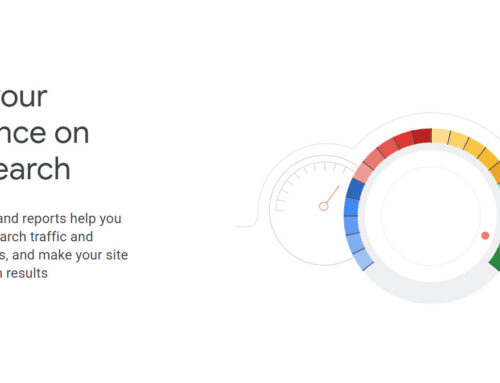Over 3.5 billion searches are made on Google each day. If you want your business website to rank and show up during those searches, you need to use the right keywords. After all, keywords are critical to effective digital marketing and SEO strategy that earns your business organic website traffic.
Using keywords a few years ago was quite easy; all you have to do was light keyword research, and place them strategically around your website content. However, in the last few years, search engines have become saturated with a ton of content using the same keywords.
If you want your website to rank on the search engines in 2021, you need to do more than just basic keyword research, and one of the best ways of doing that is by using both short- and long-tail keywords. But what are short-tail keywords, and how are they different from long-tail keywords? These terms are new concepts gaining popularity, and here’s all you need to know about them.
What are Short-Tail Keywords for SEO?
Short-tail keywords are the most popular types of keywords used for most SEO marketing strategies, and for a good reason—they are effective at driving website organic traffic. They can be described as search terms containing less than three words, such as espresso machine, pancake recipe, or best gaming laptops. Short-tail target keywords generally have high search traffic, usually in tens of thousands, depending on your industry.
However, with high organic search volumes, they also have higher competitive ratings since they are so generic. While using short-tail keywords help your website rank on search engines, it doesn’t necessarily guarantee high ranking on search engines. Using only short-tail keywords is akin to standing in a long queue, waiting for your turn.
Why Use Short-Tail Keywords?
Short-tail keywords should still remain the foundation of your keyword research and optimization process. The primary reason is that they have a high search volume, letting you target a vast audience with a single keyword. Short-tail keywords help you target an audience at the initial stages of the sales funnel, where they are just checking out the potential options. You should especially use short-tail keywords if you want to target such an audience.
And if you choose the right short-tail keywords with high search volumes but low competition, you can even start earning more total clicks and conversions for those particular keywords. When you optimize your content with the right seed keyword density, you can reap all the benefits of short-tail keywords, including ranking on the search results’ first page. Correct target keyword optimization can help you jump the queue.
How Many Words is a Long-Tail Keyword?
Long-tail keywords generally contain three or more words, but that is not what makes them so special. They are lucrative keywords that are specific, for example, best phone for photography, designer dresses for prom, or engine oil for cold weather. These keywords have a lower search volume than short-tail keywords, but don’t let that put you off. You’d be surprised to know that 70% of the search queries on search engines are made up of long-tail keywords because people usually are searching for something specific.
Do remember that long-tail keywords can sometimes be less than three-words, too. It all depends on the type of keyword you’re looking for and how specific the keyword is. Sometimes, a simple keyword with low search traffic volume and higher conversion rates or clicks can be counted as long-tail keywords. Many marketers believe that the term long-tail keywords mean target keywords that are long, but the defining factor of long-tail keywords is that they rank lower on the search demand curve when compared to short-tail, fat head, and middle keywords.
Why Focus on Long-Tail Keywords?
Higher conversion rates aren’t the only reason why you need to focus on long-tail keywords, as they have many other benefits that can really help your business’ marketing efforts. Long-tail keywords provide context to your website content, including blogs. With its 2017 Hummingbird update, Google has started focussing on contextual searches; in other words, Google is looking for long-tail keywords on your website.
Long-tail keywords also have low competition and cost but high focus and conversion rates. This means it is easier for your website to rank on the first pages of search engines and easier to rank as an organic result. Plus, most people searching for long-tail keywords are already closer to conversion and may buy your products or services much faster than those that visit your website with short-tail keywords.
Until recently, the concept of keywords and SEO only applied to search engines, but that is changing now with the advent of voice assistants like Amazon Alexa, Google Home, and Apple Home. Millions of people are now using voice search for looking things up on the internet, and most of the time, they tend to say phrases to their voice assistants. These phrases are long-tail keywords that you can start targeting to become more popular with voice search engines.
Finding the Right Keywords for Your Business?
To find the right keywords, you need to first come up with seed keywords—generic keywords relevant to your brand and marketing goals. Next, you need to use any of the keyword intelligence and research tools like Google Keyword Planner, Ahrefs Webmaster Tools, Keyword Generator, etc. and type in the seed keywords.
The keyword research tool will quickly pull hundreds of potential target keywords that you can choose from, but you have to be strategic about pulling keywords. First, you need to find short-tail keywords, and then you can proceed to pick kong-tail keywords.
To pick the best short-tail keywords, look for keywords with high volume, clicks that are closer to the search volume, and low keyword difficulty. Such keywords have higher chances of ranking on search engines since many people are searching for them and clicking on the results, yet not enough websites are using them.
For long-tail keywords simply use the word count filter on the keyword research tool to show keywords containing more than three or more words. Use the same process as before to pick the best long-tail keywords.
Many marketers claim that short-tail keywords are a thing of the past or that long-tail keywords have low search volumes, making them useless. Neither of the notions is true. You need to use both types of keywords if you want your business website to start ranking on the search engines especially when it comes to the competitive search terms and reap organic website traffic (and even voice search engines).
Stay tuned for more SEO marketing techniques on our website.
You may also be interested in…
- Cause of WordPress 404 Page Not Found Error and What Can You Do About It
- 502 Bad Gateway Error: What Is It and How to Fix It
- How to Fix DNS_PROBE_FINISHED_NXDOMAIN Error Code on Chrome, Window and Mac
- How to Fix ‘ERR_SSL_VERSION_OR_CIPHER_MISMATCH’
- How to Fix the uploaded file exceeds the upload_max_filesize directive in php.ini Error in WordPress
- Conversion Rate Optimisation for Your Website


































